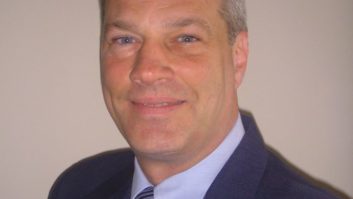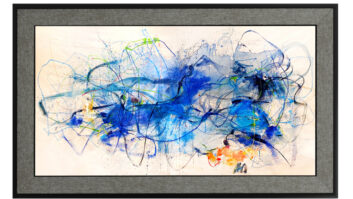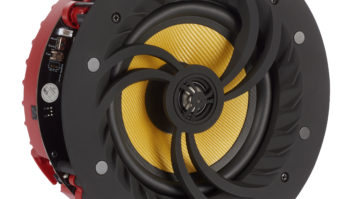In an increasingly competitive digital world based on me-too chip technology, high-end audio manufacturers are sticking with the audio principles that have guided them all along. That can be a steeper hill to climb as chip-based technologies continue to improve, bringing higher-end performance to mid- and even entry-level electronics.
“The latest and most advanced chips are in fact much the same whether in high-end or mid-fi products,” said Billy Wright, chief financial officer of Cary Audio Design. “The primary difference is in the implementation of these chips and DSPs into product designs.” Wright said circuit board layout, ground-plane design methods and power-supply designs are crucial to enhancing performance at the high end. “An analog, fully regulated power supply with a power transformer will yield a superior product compared with a digital switching power supply,” he said.
According to Andy Clark, sales and marketing VP for Harman International’s Lexicon and Revel divisions, the chip decision is only one aspect of overall system design. “While it is true that there is very little differentiation that can be done in the silicon, there are several other significant areas within a given system to differentiate a high-end product from a mass-market product,” he said.
Clark said software, user interface, industrial design and other differentiators can be used in conjunction with silicon to create a completely different and better user experience than other products based on the same chip technology. “Mass-market products are often so driven by price that they rely on the chips for their primary feature sets,” he said.
“Higher end products have more cost freedom, so multiple DSP’s can be used in conjunction to achieve better performance. Or expanded feature sets and custom software can be put on general purpose DSP’s to create unique features that are not available elsewhere.” Lexicon builds on the Analog Devices Sharc chip with its own processes including LOGIC7 decoding, automatic room EQ and Lexicon LIVE, which creates the sense of a larger listening space.
Clark notes that a quick look at the chip list for a Lexicon processor will reveal the same devices found in processors used in A/V receivers from other vendors. “If you look at a Lexicon processor, you will see that it uses chips that are available to other vendors, but the way in which we utilize them, plus the custom software we add to them, raises the experience to a much higher level than what you will see in the mass market,” he said.
At Meridian Audio, engineers take a DSP processing engine and write their own code — especially for surround sound, said Norm Steinke, sales VP. They apply the same technique to their Faroudja video processors. “We take the engine and write unique code for the processor rather than using a preprogrammed chipset,” he said.
Steinke said this approach dates back to 1994 when the Dolby specification for surround sound allowed for a lot of options that weren’t available in preprogrammed chipsets. At the time, he said, the preprogrammed chips on the market were written for the most common uses: audio/video receivers and lower priced products.
“We wanted to do what at the time were more esoteric features,” Steinke said. “We had delays for each channel so you could do time alignment. There weren’t any processors that did that prior to that time.” Meridian processors also offered phase adjustment for each channel, a feature that wasn’t available in preprogrammed chips.
Today, even low-end receivers offer those kinds of features, enabling consumers to tweak delay and phase for their listening environments. Meridian’s response to the feature upgrade in preprogrammed chipsets has been to move ahead with more advances in high-resolution sound. “We’re decoding DVDs to PCM in the player so we can up-sample a movie to 24-bit/96kHz resolution,” he said. “We took that approach because we wanted to get more performance from the specifications of the format than what was allowable through the preprogrammed chips.”
Steinke said it’s just a matter of time before preprogrammed chip makers add the 24-bit/96kHz feature to their chipsets. “We’re constantly looking to implement more features and performance,” he said. “They are as well, but we have different tradeoffs. You’ll find this feature first in the specialty market where we push forward technology. That will create more of a demand in the market and later those things will likely be incorporated into a chipset.”
The improvements set up a recurring game of catch-up between chip suppliers and audiophile companies. The rising tide creates a win-win for consumers as what were once premium-grade features find their way into lower priced product. “You’ll see receivers and basic components get a lot better,” Steinke said, “but the high-end companies that are writing code and not taking what is offered as standard in preprogrammed chips will continue to push the industry forward. That’s one of the things we look to do.”
Near term, Meridian will have a performance advantage in the latest Dolby surround-sound format, digital HD, that’s used in Blu-ray Disc and HD-DVD players. “We spent a lot of time working with Dolby on putting that format in the market,” Steinke said, “because we have a lot of expertise from MLP (Meridian Lossless Packing) in encoding audio onto formats for DVD-Audio. We will incorporate that back into the processor and use different software logarithms for decoding.” He said there’s a lot of room to tailor the standard because Dolby puts out a minimum set of specs for certification and then specifies options within the decoder for feature and performance enhancements. “We’re always looking to incorporate things at a reference level,” he said.
Digital chipsets are only part of the high-end picture, notes Bill Conrad, president of Conrad-Johnson. The same engineering principles that have always applied to high-end audio are still at work. Conrad maintains that problems that arise in the digital domain arise from the digital-to-analog conversion process. “The DACs seem to be quite critical and in order to do what they do correctly they have to be given a good environment to work in,” he said. “The signal develops not only from the current coming out of the DAC but from the resistor.”
Conrad-Johnson uses the basic Burr-Brown DACs that are found in mainstream receivers, but the components surrounding them determine the overall performance of the company’s $4,000 McCormick universal disc player. Where most companies design in an op amp, Conrad opts for a Vishay resistor that meets military specifications and “costs 250 times as much as what’s considered to be a good metal film resistor,” Conrad said. The power supplies in the Conrad-Johnson disc players are high-grade as well, and provide a suitable operating environment for the DAC.
Steinke of Meridian speaks of the importance of specialized power supplies as well. “If you look at a lot of the lower cost electronics, they’ll have one big circuit board for all functions that share a common power supply,” he said. “When you share a power supply, you’re not able to isolate the grounds. Look at any high-end audio company and its best amplifier is always a mono amp where each channel has its own power supply and ground plane. Once you start combining things, you can’t get the same results.”
As high-end audio companies venture into the video side as well, the same rules apply, according to Wright of Cary Audio Design. “Even a change to a non-ferrous (aluminum) chassis and internal shielding can make a significant difference between vivid pictures and jagged edges.” CES













